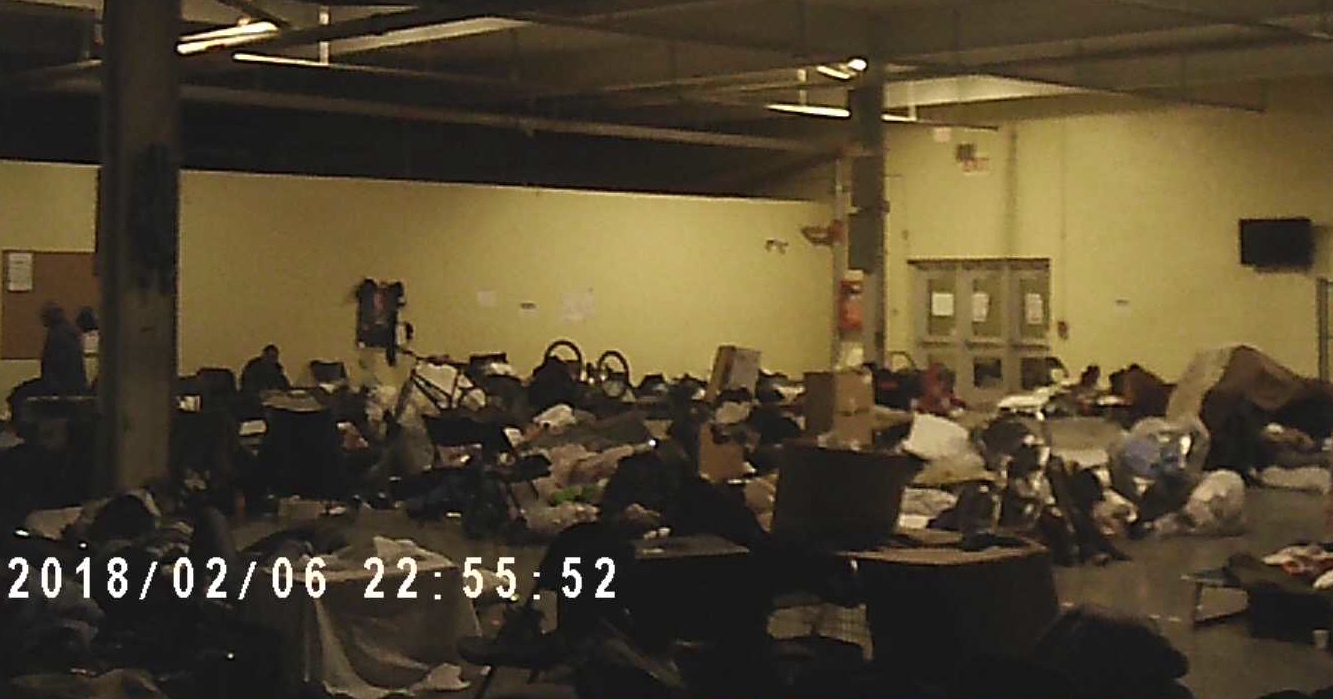Housing is not a human right in this country but neither is the right to shelter — and that has to change.
This winter Canadians witnessed the travesty of Canada’s largest city unable and unwilling to deal with the emergency shelter needs of approximately 1,000 people.
As Ontario Coalition Against Poverty activist John Clarke pointed out:
“The shelter emergency in Toronto at the moment represents a descending scale of human rights denial. People are denied housing and have to turn to a shelter system that represents a form of warehousing of human beings.”
In my January blog I outlined the backdrop to what had been a crisis building for years.
This winter, an unprecedented and multifaceted campaign for shelter resulted in many wins, including: the opening of the Moss Park armoury as an emergency shelter, the opening of eight 24-hour winter respite centres, the extension of these sites into spring, the development of standards for these sub-standard sites, the province providing a building for use and a city council motion to add 1,000 real shelter beds to the system this year.
So what worked to make this happen?
There were most definitely the usual measures: marches, rallies, deputations at city committees, filling city council chambers on various days of votes. The Ontario Coalition Against Poverty skillfully led all this organizing work.
Over 55,000 people signed a change.org petition calling for Mayor Tory to ask the federal government for the use of the Moss Park Armoury. When the mayor and city council refused, despite it being offered by the Ministry of Defence, the public was outraged.
Rafi Aaron and the Interfaith Coalition to Fight Homelessness continued their public campaign with press conferences and advocacy outlining the stresses and needs of the volunteer Out of the Cold program. They called for 1,000 new shelter beds.
A series of media conferences hosted by City Councillor Kristyn Wong-Tam and supported by a number of city councillors kept the pressure up. On December 6 she hosted a Day of Remembrance media event with women leaders outlining women’s shelter needs. At another, she hosted leaders of health and social service agencies. At yet another, Health Providers Against Poverty released the findings of their action-based research that examined conditions in winter respite centres that did not meet the city’s own shelter standards let alone the United Nations standards for refugee camps. Everyone renewed the call for at least 1,000 new shelter beds.
Various community leaders including the Registered Nurses Association of Ontario wrote opinion pieces in the newspaper. Most notably actor/director Sarah Polley described her experience New Year’s Eve when she visited a winter respite site. Her Toronto Star piece ended with: “Mayor Tory, have the decency and strength to reconsider your position. Make the call and open the damn armouries.”
Photography and film were used to expose the conditions: the opening of a warming centre in Metro Hall that had no mats or cots for people to lie down on; in other locations people sprawled on floors without cots, proper mats, pillows or warm blankets; a site where toilets (with no doors) opened onto public space.
Homeless advocate and former street pastor Doug Johnson did activist reporting that mainstream media had been reluctant to do. He posed as a homeless person and called the city’s Central Intake several times asking for shelter. He recorded calls, wrote blogs and released tapes to media where he was given misinformation. A harm reduction worker at the Moss Park Overdose Prevention site spoke publicly about their experiences unable to find a shelter spot for clients. These were factors that led the City Ombudsman to renew her investigation into the city’s response.
In January I personally toured several locations with the City Ombudsman to show her firsthand some of these conditions. Throughout the winter other activists were regularly going to sites and monitoring and reporting on conditions that ranged from tensions and overcrowding to exceedingly cold indoor temperatures. The Ombudsman’s report has now exposed serious issues around accessibility, standards and communication.
Meanwhile, prominent Canadians kept speaking out. In January over 50 people signed an open letter calling on city council to open 1,000 new shelter beds. Signatories included writers Margaret Atwood and Michael Ondaatje, actors Sarah Polley, Catherine O’Hara, Eugene Levy and Rachel McAdams, Drs. Mitesh Patel, Joshua Tepper and Stephen Hwang, former Governor General Adrienne Clarkson. Singer-songwriter Leslie Feist joined one of Councillor Wong-Tam’s press conferences outlining her concern about growing homelessness and suffering in the city.
By February, with no signs of conditions improving, photojournalist Paul Salvatori lent a hand and went undercover in three winter respite locations to film and write about what he witnessed. He wrote:
“My experience at the centres was one of profound sadness. The pain I witnessed was overwhelming. From people uncomfortably sprawled in sleeping bags — some agitated, many sick – to overcrowding, the respite centres are dangerous places where suffering manifests itself in violence and anger that can break out at any time.”
It literally took a whole village to achieve these wins, many still yet to be realized.
Stay tuned.
Photo credit: Paul Salvatori
Like this article? Please chip in to keep stories like these coming.





